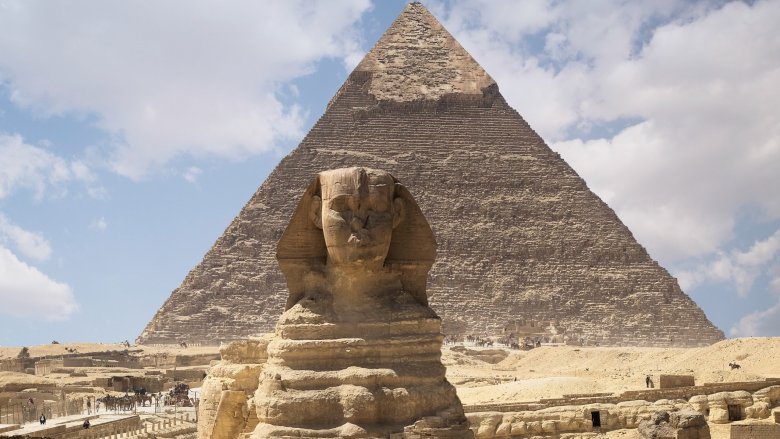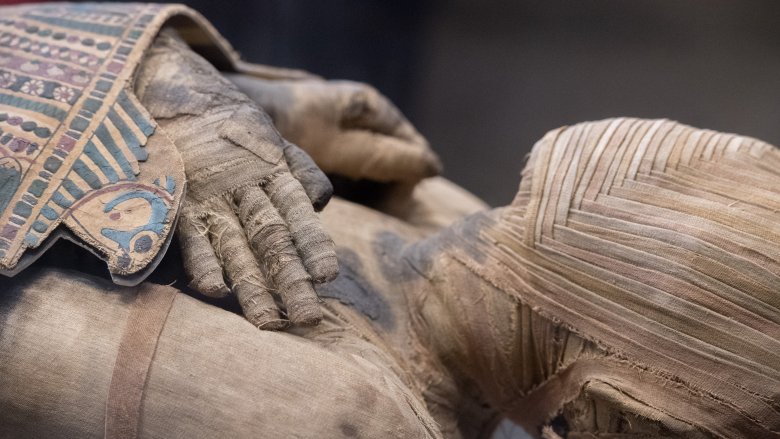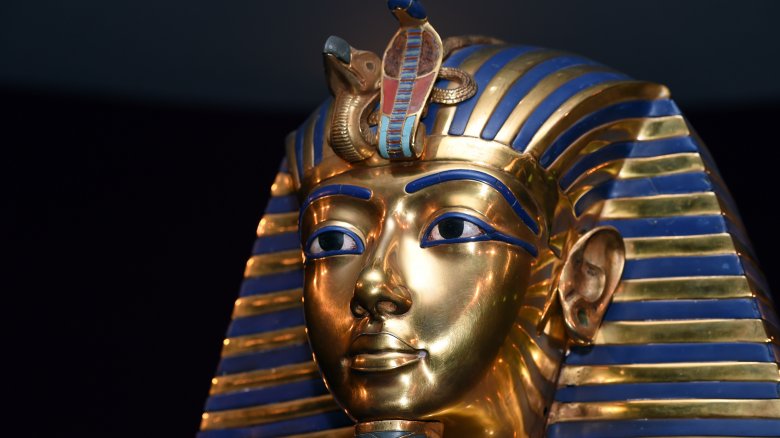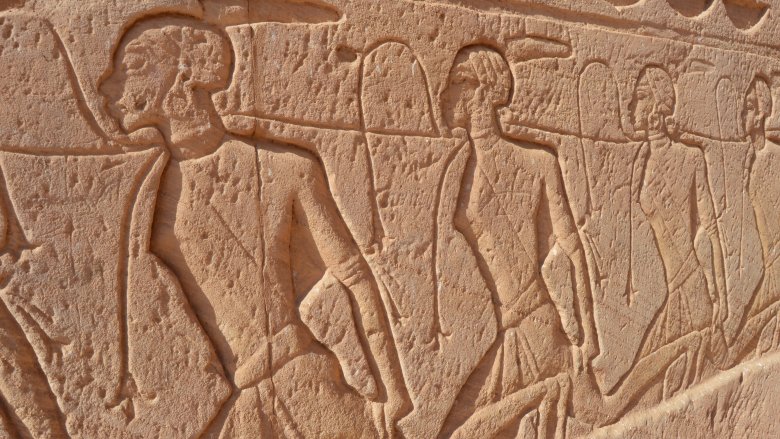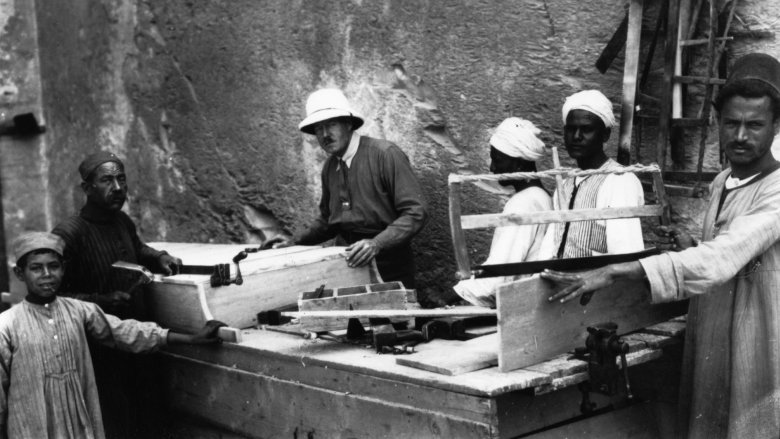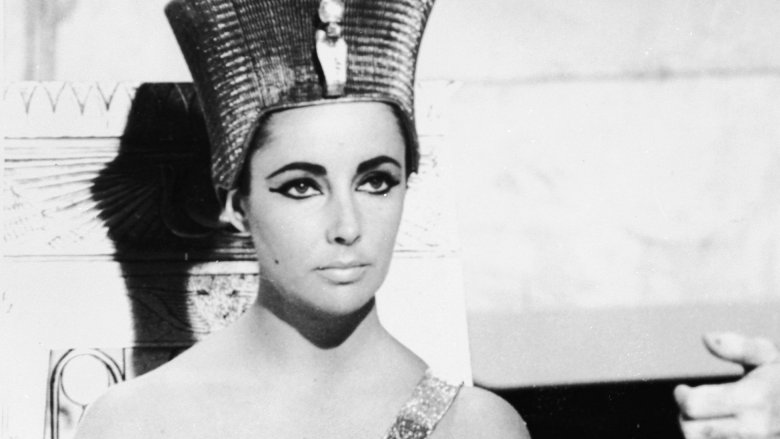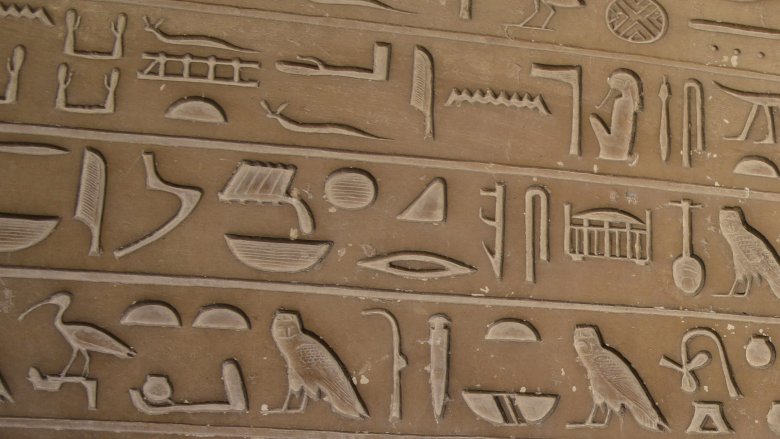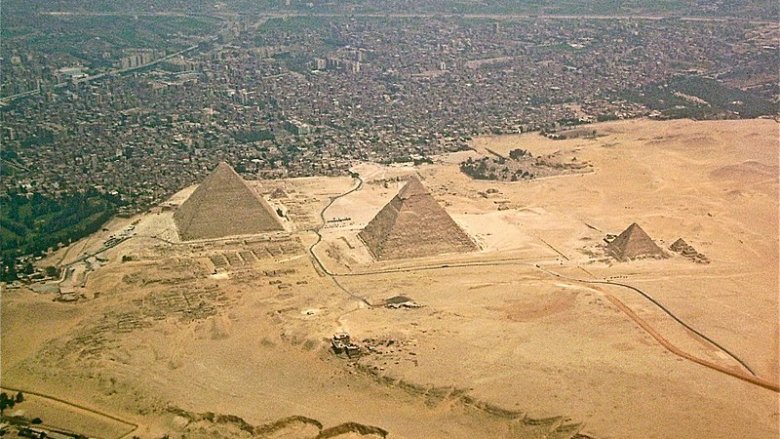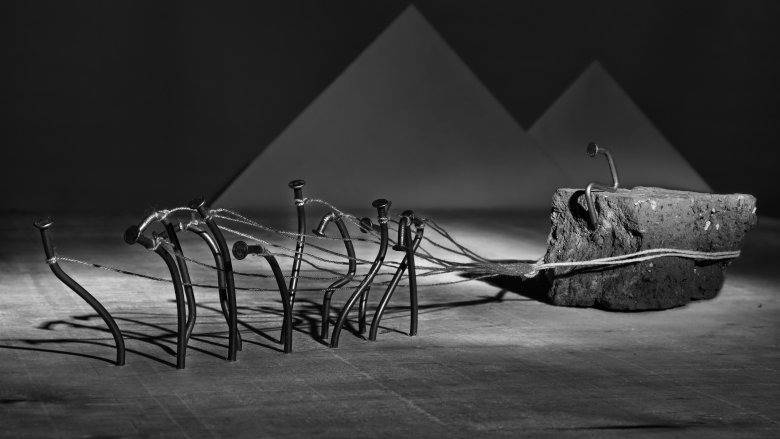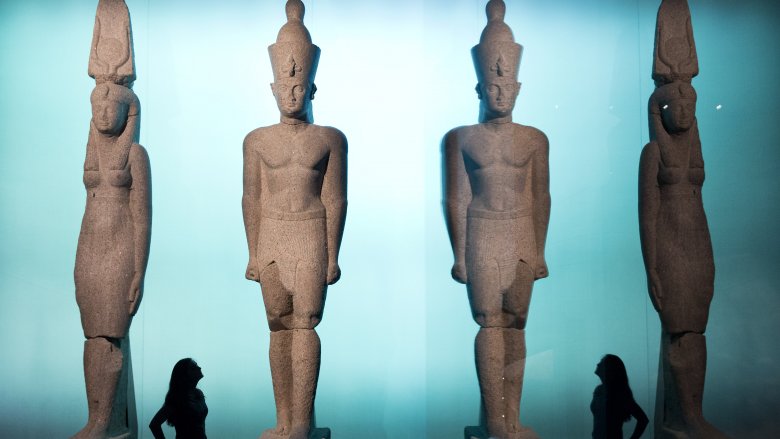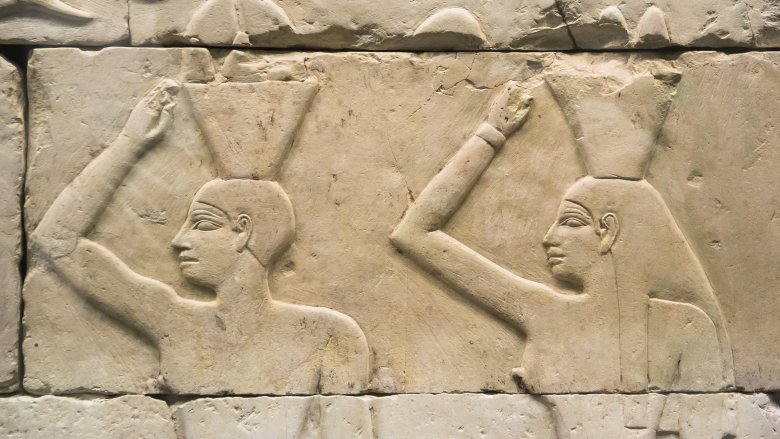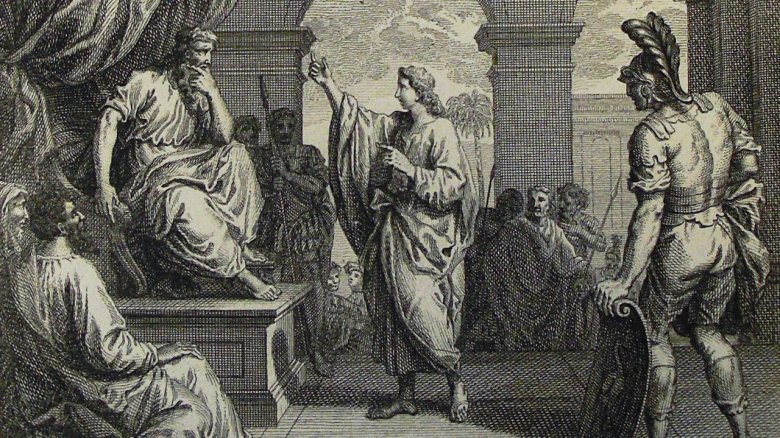False Facts You Always Believed About Ancient Egypt
Despite how awesome your fifth grade social studies teacher was, he or she didn't teach you everything there is to know about Ancient Egypt. And in reality, many of the larger-than-life "facts" you did learn were probably complete BS. Here's the truth behind all that cool stuff you thought was true about the Ancient Egyptians.
Mummification was just for pharaohs
The most famous mummies were pharaohs who went to the afterlife with jewels, jars full of their insides, and one hell of a dehydrated body. But just because you couldn't afford a giant pyramid to house your remains in didn't mean you didn't want to be mummified. In fact, everyday people are just as likely to show up in museums as the people who ruled over Ancient Egypt.
According to the Smithsonian, the earliest mummies in Egypt were probably made accidentally because when you just chuck an unprotected body into the sand in an arid environment, the body will mummify of its own accord. People soon decided being mummified was the hip new thing that would help send you off to a fun time in the afterlife, and everyone wanted to get in on it.
According to Egyptologist Salima Ikram, if you could afford it, you paid for someone to dry you out and remove your internal organs. If you were really wealthy, you had a tomb made to hold your Halloween-ready, wrapped-up body. Even the poorest people would try to mummify themselves, resorting to the age-old sand technique if necessary.
With everyone trying to get mummified, Egypt was overflowing with bodies. Over 3,000 years an estimated 70 million mummies were produced, although Ikram thinks there were probably even more. With that many mummies, you'd be lucky not to trip over them in the street.
King Tut was killed by his power-hungry grand vizier
For years, people thought King Tut's death was worthy of a Hollywood movie. According to the LA Times, even many Egyptologists thought the boy king was brutally murdered because the back of his skull appeared to be fractured. Books were written on the theory that he met a grisly fate at the hands of his grand vizier Aye.
Not only was there the physical evidence, but Aye didn't act like someone who was innocent. He was a commoner who ruled in Tut's stead while the pharaoh was a child. Then Tut died shortly after taking power, and Aye started acting really suspicious. He claimed power for himself immediately and cemented it by marrying Tut's widow, who then also died rather quickly. Talk about red flags.
Lucky for Aye's reputation, we now know Tut didn't die from a bonk on the head. Exactly what he died of is still a mystery, though. According to LiveScience, theories abound, including that he either had malaria, fell from his chariot, broke his leg, or had sickle cell disease. Basically, everything in the world might have killed him except the guy who comes off as a power-hungry maniac.
Pharaohs were always buried with their servants
Pop culture loves the image of pharaohs being buried alongside dozens of their servants. How powerful must you be when you can order a bunch of executions from the great beyond? The truth is, while some Ancient Egyptian pharaohs did bring their servants with them to the afterlife, it only happened during the First Dynasty and quickly fell out of fashion.
However, that didn't mean the pharaohs would go to Egyptian heaven by themselves. They still needed servants there to do all the work for them. After all, they were gods, so how could they be expected to do anything as complicated as make bread or pour wine? Luckily for the servants, during most of the Ancient Egyptian period, pharaohs found their way around slaughtering perfectly good servants by being buried with small wooden dolls. These small statues were called ushabtis; according to author Mey Zaki, they were painted to look just like the servants they were replacing. Then the little wooden people would do all the hard work so pharaohs could enjoy being dead. They could be buried with hundreds of these little helpers. Egyptologist Salima Ikram told PBS that some pharaohs went even further and just wrote down the names of the servants they would need in the afterlife. Servants were probably thrilled to give up the honor of dying with their pharaoh.
The pharaoh's curse was super deadly
If we all know one thing about the discovery of King Tut, it's that after his tomb was opened, everyone involved started dropping like flies. According to a New York Times article from 1922, statues guarding the inner tomb had golden serpents on their heads. The night of the excavation, the leader of the dig Howard Carter (at center in the above image) was having dinner when a serpent that looked just like those in the tomb attacked and killed his pet canary. From there the idea of the curse took off.
According to Time magazine, newspapers started running with the curse idea. (Obviously they would never do this just to sell more copy.) LiveScience says that even Sir Arthur Conan Doyle believed the curse was real. One theory is that the rumor might have been started by Howard Carter himself just so people would stay away from his find.
All told, 11 people connected with the dig died in the next seven years, but there never was any curse. According to History.com, in 2002 the British Medical Journal did a study of the lifespans of all the Westerners who were in Egypt at the time of the tomb's opening and found that those who were present weren't likely to die any earlier than their contemporaries. Carter lived another 17 years, and plenty of "cursed" people lived long and happy lives.
Cleopatra was a hottie
If in-her-prime Elizabeth Taylor is chosen to play you in a movie, chances are you were super hot. That's the myth that has existed about Cleopatra since Ancient Rome. This was a woman who managed to seduce two of the most powerful men in the world at the time, Julius Caesar and Mark Antony, so she must have been a total fox. According to Heritage Daily, the Roman historian Cassius Dio, writing 200 years after she died, said Cleopatra was "a woman of surpassing beauty."
Here's the thing: sexy does not always equal hot. And according to the Egyptologist Joyce Tyldesley, from the evidence we do have the chances are Cleopatra was pretty mannish looking. Unfortunately, we don't have any portraits or busts of the queen, but we do have her picture on coins from the era. These show her as having a big nose, a protruding chin, and wrinkles. Not exactly supermodel status. It's possible that she portrayed herself that way to seem more dignified rather than as a weak woman. Women had been pharaohs before, but she probably still wanted to assert her authority as much as she could, and looking more like a weathered guy might have done the trick. Or it could be an accurate representation of what she looked like. The Roman writer Plutarch, who never met Cleopatra but was writing before Cassius Dio, said that she had a sexy voice but wasn't a hottie. Maybe we'll figure it out if we ever find her tomb.
Everything was written in hieroglyphics
Virtually every time you see Egyptian writing, it's all hieroglyphics. The images made up a language so complex that we had no idea what they said until the discovery of the Rosetta Stone. Now housed in the British Museum, the stone helpfully translates the hieroglyphics into Greek. But despite what you might think, not everyone in Egypt had time to sit and carve pretty pictures every time they needed to write a grocery list.
According to the Encyclopedia Britannica, for over 2,500 years, people who could read and write mostly used a type of script derived from hieroglyphics called hieratic. This was the standard way to write using a pen and papyrus as opposed to chiseling stuff into rocks. Even religious documents were usually written in hieratic. This script was eventually replaced with an even simpler one called demotic. (That's the third language on the Rosetta Stone.) Again per the Britannica, its Egyptian name literally mean "writing for documents" and scribes and businesspeople used it for over 1,000 years. As cool as it might be to think of a storekeeper carving your receipt out into a huge piece of rock for a couple hours, in reality they'd just dash off some quick cursive. Hieroglyphics were used for important things like tomb messages because the dead weren't really in a rush once. Craftsmen had all the time in the world to write that stuff out.
The pyramids are in the middle of the desert
Dramatic period movies have told you what to expect if you ever go see the pyramids. Located in the middle of the desert, your camel will be half dead after walking so far to see these ancient marvels. Sand will have lodged itself in crevices you never even knew you had. Finally, they rise out of the dunes like a mirage and you have made it. It was well worth the dangerous, thirsty journey to see something so amazing.
It makes sense you'd think this since most pictures you see of the pyramids show sand, the Sphinx, and not much else. But in reality, the pyramids sit right on the edge of the sprawling city of Cairo, as seen in the above image. Depending on where you live, you might have one very sweet view. Some realtors probably advertise houses as being within walking distance to the last remaining Ancient Wonder of the World. It kind of takes away part of their mystical qualities, though, knowing you could just pop out to the store and pass the pyramids on your way.
Jews and slaves built the pyramids
Hollywood is obsessed with the idea that slaves, particularly Jewish slaves, built the pyramids. It makes a little sense: how could something that big be built without some back-breaking forced labor? Surely no one would offer to build them just out of loyalty to the pharaoh?
Maybe not just for loyalty, but throw in a paycheck and you've got a workforce. According to Egyptologists, around 10,000 skilled workers were employed to build the pyramids. It makes sense because the pharaohs would want people who knew what they were doing. The slave story started with the Ancient Greek historian Herodotus and hasn't let up since. The Jewish aspect was added much more recently, when former Israeli Prime Minister Menachem Begin visited Egypt in 1977 and threw out the idea that the Jews has been the ones who built the pyramids.
Begin was partially right. According to the Bible, the Jews were enslaved to do "backbreaking labor." But whatever they built it wasn't the pyramids because, simply put, the Jews didn't exist at that time.
Archaeological evidence shows that the people who did build them were treated well. The 10,000 laborers worked in three-month shifts and, as a group, consumed 21 cows and 23 sheep per day. If they died while working on the pyramids, they were given the honor of being buried right outside it, in tombs complete with beer and bread for their sweet party in the afterlife.
All its rulers were Egyptian
When you think of Ancient Egypt, you probably think of a very specific style, namely really buff people who were always looking to the side for some reason. But it wasn't just Egyptians who ruled over the Nile.
Ancient Egypt was a pretty impressive place, and once other countries started building their own empires, it was the place to conquer. Who wouldn't want to get a fancy hat, a nice tomb, and to become a living god? The first foreigner who decided Egypt had to be his was Alexander the Great. This Macedonian was on a roll, taking over everything in his path. Once he got to Egypt, he started a dynasty that would last over 300 years. Ethnically Greek, according to the New York Times, the Ptolemy dynasty would be become a kind of mesh of the two cultures and Alexandria would become one of the first cosmopolitan cities. The Ptolemies would take on some of the weirder Egyptian customs, like marrying siblings to keep power in the family, but according to the Smithsonian, not a single Ptolemy pharaoh could be troubled to learn the Egyptian language until Cleopatra, and she was the last of the line. Talk about too little too late.
People had very few rights
When your country is ruled by people who are supposedly gods in human form, you probably assume average people don't have many rights. We know that Ancient Egypt had slaves, but people actually had a lot more rights than you might expect.
Skilled workers, like the ones who built the pyramids, had a sweet life. According to PBS, workers had houses with numerous rooms and got two days off for every ten days they worked. (That's a lot better than pop culture images of whip-cracking slave drivers would suggest.) They were even allowed extra days off if they needed to mummify a friend or relative, or (most importantly) if they needed to brew beer. But they took their perks seriously and were even known to go on strike if they weren't getting the treatment they wanted. After the death of Ramses II, the government had trouble feeding and paying the workers, so they organized the first recorded strike in history.
What's more, women in Ancient Egypt had almost as many rights as men, according to the University of Chicago Library. They shared property jointly with their husbands and could divorce them if things went south. They could hold down jobs and make contracts in their own names; they could even be pharaohs, the sweetest position there was. Nice. Women couldn't even vote in most societies until almost 100 years ago.
The pyramids were built to store grain
It's hard to believe this needs debunking, but the idea that pyramids were built to store grain is so prevalent that a presidential hopeful even brought it up while campaigning.
Ben Carson didn't just pull this theory out of his nether regions. This story started appearing in the Middle Ages, according to the BBC. The idea is that the biblical figure Joseph had a dream that Egypt was going to have a terrible famine and needed to store grain to get ready. Then he told the pharaoh (pictured above). You can even see images of the pyramids being filled with grain at St. Mark's cathedral in Venice. Why wouldn't you trust people who decided to build a city on top of water?
There are a few things wrong with this theory. First, the story of Joseph occurs during the Middle Kingdom, hundreds of years after the pyramids were built. The biblical story never even mentions pyramids. Second, pyramids have very little room inside, which would make it ridiculous to build such huge structures to store a tiny bit of grain. Finally, we know that the pyramids were built as tombs. Carson's idea is so ridiculous to people who actually know what they are doing that, according to Mahmoud Afifi, Egypt's head of ancient antiquities, the theory they were grain stores is right up there with the idea they were built by people from Atlantis.
